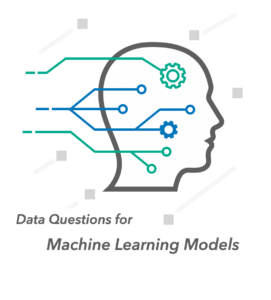Case Study: A personal loan lender drives net loan growth while reducing risk
A Hong Kong licensed money lender partnered with CREDI AI to deploy its first AI-based credit scoring model. Learn how they were able to drive loan growth while reducing risks and losses. What they faced before : When they saw delinquencies for personal loans nearly double over a 3-year span, they already knew their scorecards did not work for their entire target customers. They made an adjustment by tightening approval policies and denied more customers by setting a higher score cut-off. As they had struggles in net loan growth by their defensive policies, they were looking for a way to drive loan growth with confidence while reducing risks and losses. […]
5 reasons why AI credit scoring has come under the money lenders’ spotlight
AI is already widely deployed in financial services and began as one of the most significant digital transformation drivers. Customer service automation, fraud detection and identity verification are the most commonly used applications of AI in finance. Now, AI and machine learning (ML) have reached the central role of the lending industry: credit scoring for consumer lending. By detecting countless patterns in credit data, ML models enable lenders to paint a clearer picture of credit risk. Using ML reduces default risks, identifies good borrowers and improves credit access for consumers, especially in near-prime or subprime segments which are main target customers for money lenders in Hong Kong. This blog identifies […]
3 things money lenders need to know about data for machine learning models
Hong Kong’s jobless rate rose to 7.0% in January to the highest level near 17 years. Although the government has eased social distancing measures from middle February, the damages of job market and local businesses will be likely to remain as it will take more time for business activities to recover. Global pandemic’s impact on the Hong Kong economy and lending industry has reinforced the urgent needs of digital transformation and move to AI. In the current environment, money lenders are not able to rely on credit scores that they have been using and they need a new way to assess credit risk more accurately. AI becomes widespread for lending […]
2021 is the year for Hong Kong money lenders to look beyond traditional credit scores
In the US alone, 60 million adults are credit-invisible, this means, people has a limited or no credit history. Traditional credit scores are not available for these credit-invisible people, so they can’t help them to navigate financial inclusion because traditional scores can’t prove their creditworthiness. In Hong Kong, the city is the international financial hub and matured consumer credit market however, there are still some people who have difficulties in accessing to the financial services they need. Millennials and Gen Z, workers from overseas and domestic helpers, many of them are either credit-invisible or thin-file and unable to measure their financial ability based on traditional credit scores. Now, under the […]
A credit scoring model for non-TransUnion lenders has been just updated and now available with HK Score
We are pleased to announce the update of credit scoring model for non-TransUnion members. The non-TransUnion members are money lenders who are independent from TransUnion’s credit history data. In general, they are targeting subprime borrowers and dealing with higher credit risks in the consumer credit market without accessing TransUnion’s data. However, most of them don’t have risk modelling and credit scoring so that they still rely on human decisions with inconsistency which tend to include unnecessarily biases and they cannot correctly respond to environment changes at time like now. This is where CREDI AI can improve. The model can help those lenders to start measuring potential risks by using credit […]
Agility is becoming more crucial for lenders than ever
Hong Kong’s jobless rate from August to October period stood at 6.4%, a 16-year high, according to the latest labor force statistics. Recently, we’ve seen that travel sector was hit hard, Cathay Pacific and travel agencies have been cutting jobs. The government’s Employment Support Scheme appears stalled and will be ending soon, the economy will be prepared for a wave of layoffs from SMEs and some of major corporations. COVID has induced economic uncertainty to stay longer, and companies will need to tap into greater agility to get over difficulties from market volatility. Banks and money lenders are required to help borrowers through a variety of relief services, such as […]
Measuring behavioural change has traditionally been a challenge, yet there is a way to overcome
Continuous learning and improvement are core principals of agile working. Successful agile transformations have shown the value of monitoring process, evaluating behavioral change and its impact on performance. For lending, risk models are required to have an agility in order to manage loan portfolios well especially times like now under the economic slump. Deterioration in credit qualities has become more evident in Hong Kong’s credit market. The first step is to measure behavioral change and model accuracy consistently and continuously. In fact, measuring behavioral change has traditionally been a challenge, but there is a way to overcome this challenge. Let’s take it further. Risk monitoring on credit scoring model is […]
How can Auto-decision adapt to your existing lending system?
Now we’d like to talk about system integration in this post. How ML model and auto-decision can be integrated into your existing loan management system is one of most popular FAQs from lenders. (As we talked about the way to proceed with auto-decision in my previous post.) Here is the image of system integration and underwriting policy in your existing loan operation environment. First, an application of loan is submitted to the loan management system. Then bureau data is acquired for that particular applicant by lender. The application and bureau data are provided via an API to your model which is running in a crowd server managed by CREDI AI. Just […]
How can Automation come into play in your lending?
As we have talked about the mechanism in my previous post, the utilization of AI will enable you to make faster and better credit decisions which are the thrust for thriving lending business. (Please check my previous post for more details.) Now we’d like to talk about the way to proceed with it. We understand that every lender has a different view for automation and needs for a comfortable way of reaching targets in their process. In this post, we’d like to talk about the insights on how auto-decision can come into play in your lending operation. Again, the largest obstacle on the auto-decision would be mentalities. Your loan decisions will become […]
How can AI improve your lending in the time of economic uncertainty?
“Lending automation” has become one of the major themes that is discussed at every online meeting with lenders these days. The term “automation” includes many things for lending such as loan applications on a mobile device, less manual and paperless loan process, customer service through digital channels, etc. But for CREDI AI, the automation means faster and better credit decisions which are the most important agenda for all lenders, therefore it has become the most impactful solution under the current virus-driven recession. As CREDI AI is a specialised pattern detection in your data, our predictive ML models find the hidden patterns and use more data and better math. These are custom models trained on your data so they are designed to be more predictive than pre-packaged models. In a traditional liner regression model, you might have only 30-40 data features. ML models can fully make use of all available data normally more than a few hundreds of variables, and can track non-linear behavioural […]










